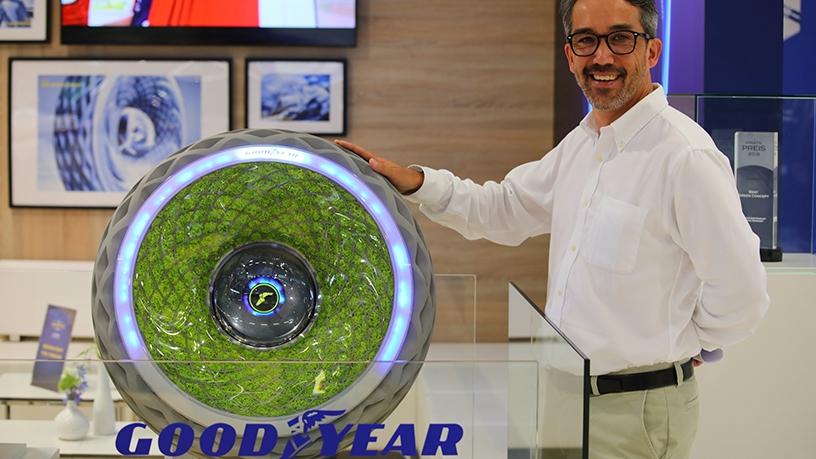
Tyre manufacturer Goodyear has come up with a prototype tyre that is sustainable, environment-friendly, incorporates artificial intelligence (AI), and is designed to 'talk' to other vehicles and infrastructure using Li-Fi technology.
The futuristic Oxygene photosynthesis tyre is meant to give a glimpse into what smart and sustainable mobility might look like when everything is connected and electric.
Water is picked up through the tread and distributed to the moss on the sidewall of the tyre using an AI system that is powered by the electricity the moss produces when it photosynthesises.
The tyre design was recognised with a creative award for best green idea at the Tyre Cologne 2018 trade show, taking place in Cologne, Germany. It was first unveiled at the annual Geneva International Motor Show earlier this year.
Saburo Miyabe, chief engineer at Goodyear Germany, explains the benefits of using these tyres: "If around 2.5 million cars would drive on moss tyres in a city like Paris, there would be around 3 000 tonnes more oxygen and 4 000 tonnes less carbon dioxide in the air."
President of Goodyear EMEA, Chris Delaney, says: "With more than two-thirds of the world population expected to live in cities by 2050, the demands on transport networks in urban environments will increase substantially. Smarter, greener infrastructure and transport will be crucial in addressing the most pressing challenges of urban mobility and development."
While in use, Oxygene inhales CO2 from the air to feed the moss and release oxygen via photosynthesis.
It also uses Li-Fi for high-capacity mobile connectivity which lets it exchange data with other vehicles and infrastructure that will be commonplace in future smart cities.
The lightweight wheel features a non-pneumatic construction, which means it is not supported by air pressure, which in turn extends the life of the tyre as it is not at risk of a puncture.
It is also sustainably produced: it is 3D-printed with rubber powder from recycled tyres.
Share